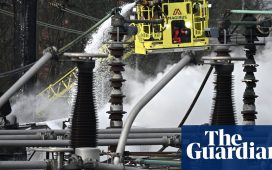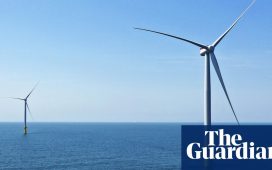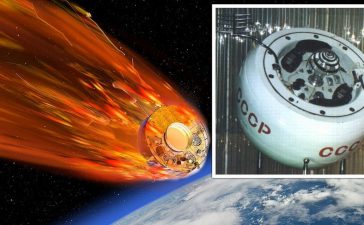Nuclear power is on the brink of a comeback. Having been out of favour in many parts of the world over the past decade, the technology is attracting interest again as a way of cutting carbon dioxide emissions.
According to the International Energy Agency (IEA), global nuclear power capacity would need to more than double, to 916 gigawatts by 2050, to meet the internationally agreed goal of net zero carbon emissions in that time.
But, at the COP28 global climate summit in Dubai, last December, more than 20 countries — including the US, Japan and the UK — agreed to work towards tripling nuclear power capacity by that same date. And, in his budget this month, UK chancellor Jeremy Hunt confirmed his government’s aim for nuclear to supply about a quarter of the nation’s electricity by 2050, up from about 14 per cent now.
However, the costs of building new plants, and recent high-profile budget overruns, have raised questions about viability — particularly given fierce competition from other low-carbon technologies, such as wind, solar, and battery storage. Nuclear currently supplies about 10 per cent of global electricity.
“We see nuclear power as an important part of the energy transition,” says Brent Wanner, head of the power sector unit at the IEA. “But we do recognise that particularly recent projects in advanced economies have had difficulties being delivered on time and on budget.”
The problems have been high-profile and severe. France’s EDF said in January that the Hinkley Point C 3.2GW nuclear plant it is building in Somerset, England, is on course to cost up to £46bn in today’s prices and will be delayed by two more years to 2029 — compared with an initial £18bn and completion by 2025.

Meanwhile, the expansion of Georgia Power’s Vogtle plant in the US is seven years late and has cost $17bn more than its original price tag of $14bn (Vogtle’s Unit 3 went online last July but Unit 4 has been delayed until this year).
In addition, notes Wanner, large nuclear plants under construction in the US, France and the UK are being built at a cost of about £150 to £200 per megawatt-hour, compared with £50 to £60 per MWh for solar and onshore wind.
The nuclear industry argues that this “levelised cost of electricity” metric, which takes into account a plant’s expected output and build and run costs, is a blunt instrument and does not recognise the plants’ ability to supply power regardless of the strength of the wind and sun.
Even so, cutting costs will be key to nuclear’s comeback. At about £100 per MWh, which the IEA believes is achievable for the next round of plants in Europe, nuclear will play a “complementary” role in the energy system alongside wind and solar, Wanner suggests. But he adds: “The nuclear industry needs to deliver projects on time, and on budget, and at these lower costs, to really compete for the larger market.”
The industry argues it can bring plant costs down in three ways: repetition, better planning, and cutting size.
Repetition enables costs to come down with each new plant built, say executives, as lessons are learned and supply chains recover from a stop-start approach to the technology. “The best way to reduce build costs is to replicate and, crucially, achieve design maturity before construction,” says Tom Greatrex, chief executive of UK lobby group the Nuclear Industry Association.

Size is being reduced by several companies that are developing “small modular reactors” (SMRs) — a catch-all term for technologies operable on a smaller scale. The companies argue that smaller reactors should be quicker and, eventually, cheaper to build, with key parts assembled off-site.
Potentially, these SMRs could be deployed alongside heavy industry, providing a new route to commercial deployment. As well as electricity, some may be able to supply low-carbon heat, opening up a large source of revenue and a big advantage in a low-carbon energy system.
And better planning could cut construction times. “If you have a much less time-intensive project, then your cost of capital goes down significantly,” says Amy Roma, US-based global energy practice leader at law firm Hogan Lovells.
However, sceptics question how far costs can fall. They argue that the costs of large plants are not just down to new technology, and note the SMR industry is a long way from commercial deployment while showing signs of strain. In November, US developer NuScale cancelled a project to build what would have been the US’s first such reactor in Idaho, after costs rose and it failed to secure enough buyers for its electricity.
Critics also dismiss claims of lower costs being achieved in China, where budgets are opaque. “I’m pro-nuclear but I think the industry has to stop deluding itself that magic is going to happen,” says Michael Liebreich, energy expert and former adviser to the UN on sustainable energy.
Strong political support for nuclear in many countries can make budget overruns more tolerable — but they still deter the investment that could bring costs down. For example, the UK government is seeking backing for EDF’s next large-scale reactor in the UK, Sizewell C in Suffolk, but the spectre of cost blowouts at Hinkley Point C looms large.
“The countries which have excelled at building nuclear stations have done so because they made a clear commitment to back nuclear, they have built fleets and they kept on building,” points out Greatrex, at the IEA. “That’s how you make it cheaper.”
Nuclear is not the only technology facing challenges, though. Costs of offshore wind power shot up last year amid supply chain strains and high interest rates. As a result, nuclear will have role to play in the overall energy transition — the question is: how large a role? “Over 80 per cent of global energy still comes from fossil fuels,” says Roma. “We need every tool at our disposal.”











